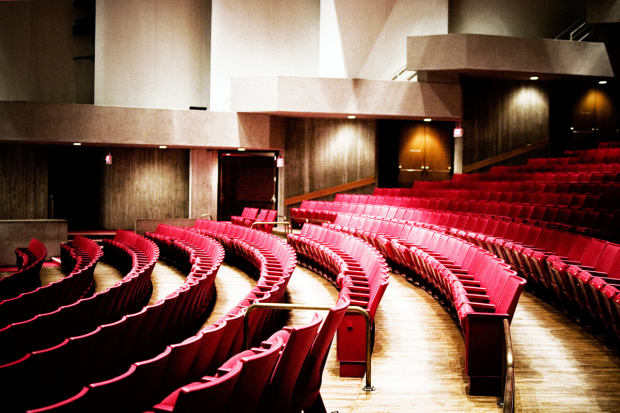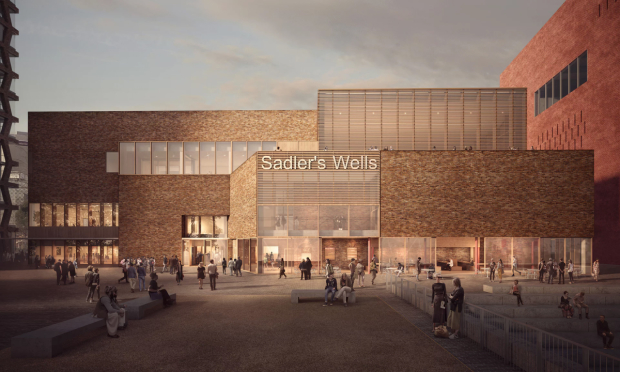Let's not lose sight of the limitations of studio theatres

Next week, the Bush Theatre unveils the final part of its refurbishment: a 70-seat studio theatre. It opens with a nod to the Bush’s history as a studio space. Barney Norris‘ new play While We're Here takes some inspiration from the plays of Franz Xaver Kroetz that the Bush staged in the 1970s. Their minimal domestic scenes seemed all the more seismic in such a small space.
It’s a big development for the Bush – not just an opportunity to double its output, but a space suited to fostering emerging talent. Besides that, it’s a mark of progress: the studio theatre has sprouted a studio theatre of its own.
It’s not the only one either. In the last ten years, London has sprouted studio spaces left, right and centre. The Hampstead added its Downstairs theatre in 2010. The Other Palace (originally the St James Theatre) and the Park both came with second spaces built in, while both the Arcola and the Southwark Playhouse gained studios in the process of relocating from one site to another. You could add the Menier Chocolate Factory to them. Though it has no organisational link to The Bunker theatre beneath it, the two share a landlord and feel like they could be sister venues.
In the last ten years, London has sprouted studio spaces left, right and centre
Essentially, the two-theatre model has become the norm. The Royal Court set the bar here. In 1969, under Bill Gaskill’s tenure, the English Stage Company converted its loft into its Upstairs space. It was one of the first studio theatres at a mainstream theatre, and greatly expanded the Court’s repertoire. To a 400-seat traditional proscenium arch space, they added a flexible 100-seat black box, 30ft by 40ft. History tells its own story: from The Rocky Horror Show to Blasted, Christie in Love to Sizwe Banzi is Dead were all produced there, as were Caryl Churchill, Joe Penhall, Simon Stephens and Polly Stenham‘s very first plays.
Over the next 20 years, as regional theatres opened around the UK, most included a black-box studio to allow range and new work. The Traverse made the model its own with its two spaces working overtime every August. After the millennium, as New Labour’s funding and lottery money kicked in, London’s major subsidised theatres took up the charge: the Young Vic, Lyric Hammersmith and Soho Theatre now have five studios between them.
Not only do these new theatres within theatres mask how much London theatre has grown, they represent a very particular type of growth. In all the older examples, a studio theatre sat alongside a large main house. That’s not the case with the new set. The Hampstead’s main house seats 325; the Arcola’s, less than 200. Their studios might be smaller, but they don’t represent anything radically different. They expand the output, they don’t necessarily extend it. Again: even our studio theatres have studio theatres.
You could argue that the economics of this are skewed. We end up producing a lot more theatre without a comparable hike in audiences. It might mean an audience bump, but each new studio space only increases overall capacity by 70-100 and each needs a whole new show to do so. An increase in new theatres and new shows means an increase in competition for audiences which are stretched thinner across those shows. Given (relatively) steady production and running costs, smaller theatre yields smaller returns. It may be less risky in some respects, but in others – tight margins, inexperienced artists – it’s not. It’s not unfair to ask whether we’re producing too much theatre?
We shouldn’t lose sight of the limitations of studio theatres
Nor is it unfair to ask what sort of work we’re producing. In theatre, arguably more than any other art form, space dictates the sort of work that gets made. More small studio spaces means more small-scale studio shows. That means intimacy is privileged over spectacle, and experimentation over accessibility. You can fill a 90-seater by attracting theatre obsessives with niche work. Bigger houses must pull wider crowds. Gradually, the ecology shifts.
If there’s been a push to get writers writing for bigger stages, directors have found themselves getting stuck in small ones. Studios might mean more opportunities for emerging directors, but many complain of mid-career blockages. They prove their talent then find themselves pitching for main stages against long-established elders like John Tiffany or Katie Mitchell, even on occasion Oscar-winners like Danny Boyle or Sam Mendes. Only a few directors are trusted in the biggest theatres, most of which operate commercially. Such shows go to proven pairs of hands, often with name-recognition of their own: Michael Grandage, Ian Rickson, Dominic Dromgoole, Marianne Elliott – most of whom have served stints as artistic directors.
All of which is why the most important new venture, in London at least, is Nicholas Hytner and Nick Starr’s new Bridge Theatre – a 900-seater with a big stage to boot. It’s a space for established directors to stretch out in and, where the West End is gaining new mid-scale spaces (the Sondheim will hold 405, as will Nimax’s new theatre), it’s these that London really needs.
We should celebrate the possibilities of studio theatres for sure, but we shouldn’t lose sight of their limitations either. Big can be beautiful too.











